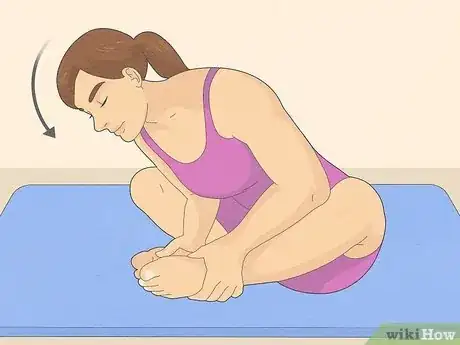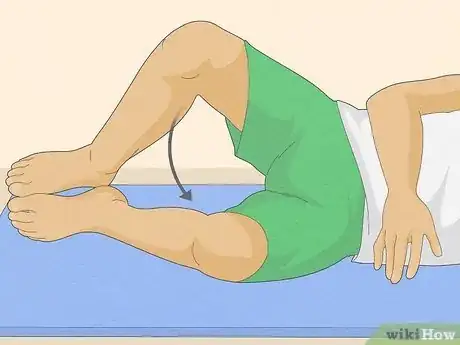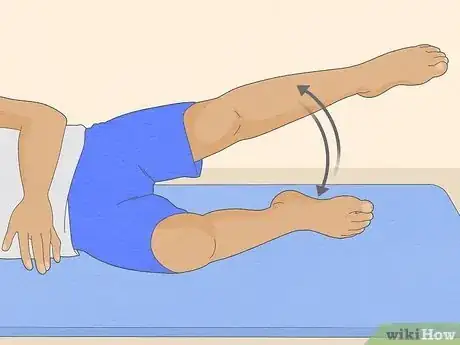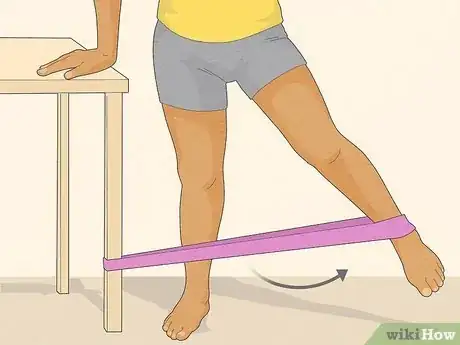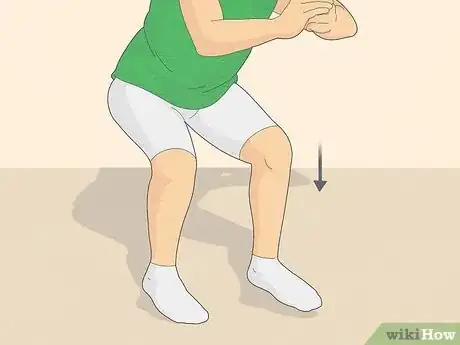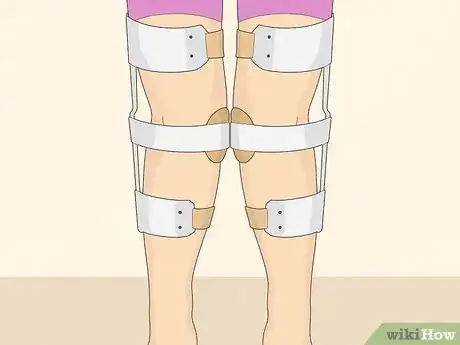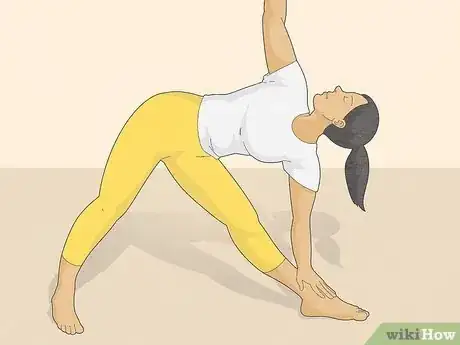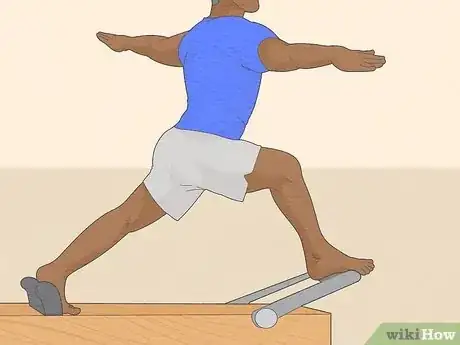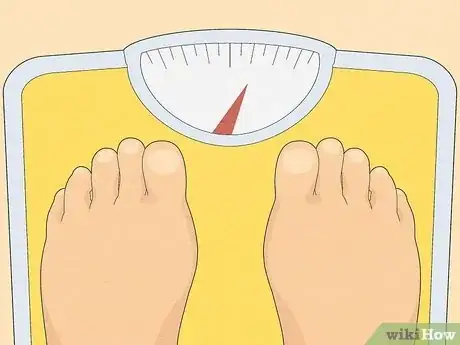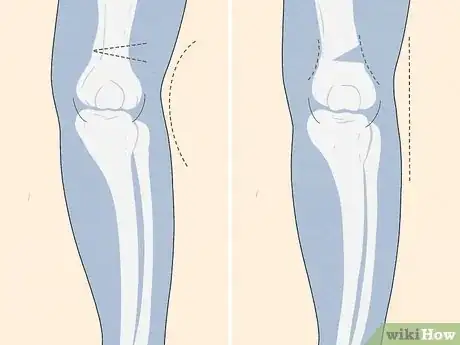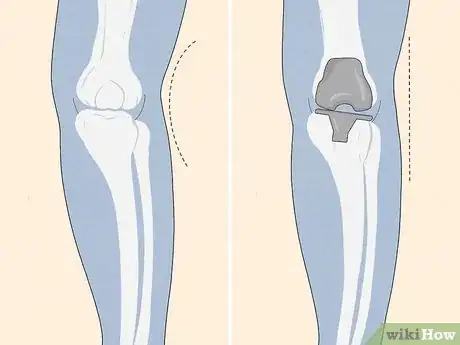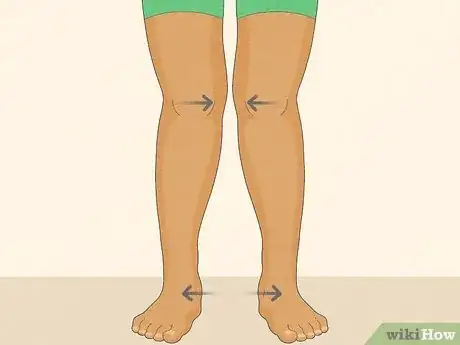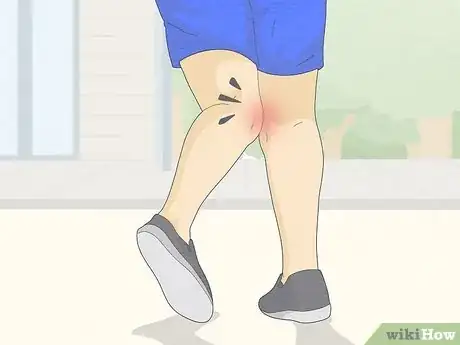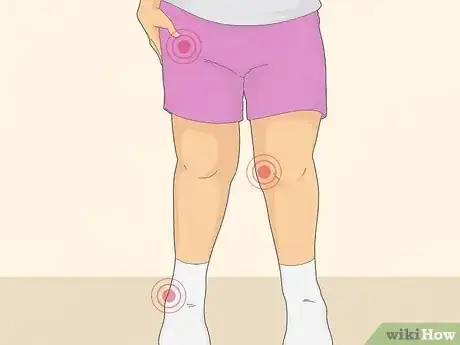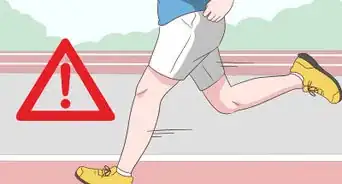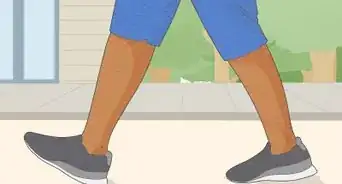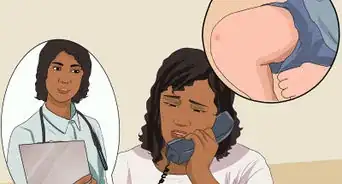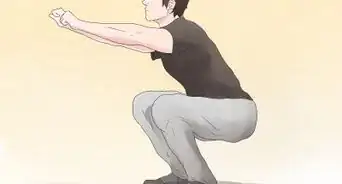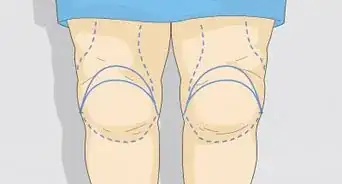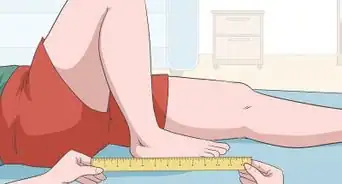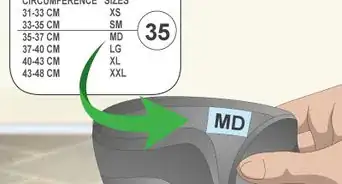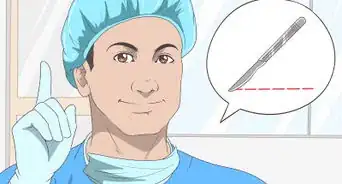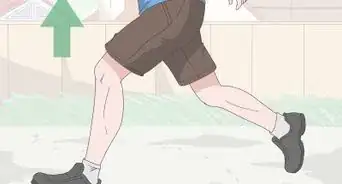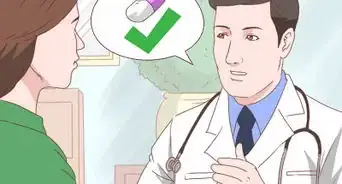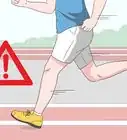This article was medically reviewed by Jonathan Frank, MD and by wikiHow staff writer, Hannah Madden. Dr. Jonathan Frank is an Orthopedic Surgeon based in Beverly Hills, California, specializing in sports medicine and joint preservation. Dr. Frank's practice focuses on minimally invasive, arthroscopic surgery of the knee, shoulder, hip, and elbow. Dr. Frank holds an MD from the University of California, Los Angeles School of Medicine. He completed an orthopedic residency at Rush University Medical Center in Chicago and a fellowship in Orthopedic Sports Medicine and Hip Preservation at the Steadman Clinic in Vail, Colorado. He is a staff team physician for the US Ski and Snowboard Team. Dr. Frank is currently a scientific reviewer for top peer-reviewed scientific journals, and his research has been presented at regional, national, and international orthopedic conferences, winning several awards including the prestigious Mark Coventry and William A Grana awards.
There are 14 references cited in this article, which can be found at the bottom of the page.
This article has been viewed 294,462 times.
When you stand with your legs together, do your knees touch but your ankles don’t? If so, you may have knock knees, or genu valgum. This condition is treatable, and many people find success with exercises and simple lifestyle changes. More severe cases may need surgery, but it isn’t common. To learn more about knock knees and what your options are, read through this article.
Things You Should Know
- Try stretches and exercises to treat knock knees at home. Do things like a figure 4 stretch, a butterfly stretch, and squats.
- Wear running shoes to support your knees and hips while you walk. Eat a healthy diet to support bone health, and lose weight if you need to.
- Talk to your doctor about surgical options if your knock knees are severe or if you have arthritis.
Steps
Expert Q&A
Did you know you can get premium answers for this article?
Unlock premium answers by supporting wikiHow
-
QuestionCan knock knees be corrected in adults?
 Jonathan Frank, MDDr. Jonathan Frank is an Orthopedic Surgeon based in Beverly Hills, California, specializing in sports medicine and joint preservation. Dr. Frank's practice focuses on minimally invasive, arthroscopic surgery of the knee, shoulder, hip, and elbow. Dr. Frank holds an MD from the University of California, Los Angeles School of Medicine. He completed an orthopedic residency at Rush University Medical Center in Chicago and a fellowship in Orthopedic Sports Medicine and Hip Preservation at the Steadman Clinic in Vail, Colorado. He is a staff team physician for the US Ski and Snowboard Team. Dr. Frank is currently a scientific reviewer for top peer-reviewed scientific journals, and his research has been presented at regional, national, and international orthopedic conferences, winning several awards including the prestigious Mark Coventry and William A Grana awards.
Jonathan Frank, MDDr. Jonathan Frank is an Orthopedic Surgeon based in Beverly Hills, California, specializing in sports medicine and joint preservation. Dr. Frank's practice focuses on minimally invasive, arthroscopic surgery of the knee, shoulder, hip, and elbow. Dr. Frank holds an MD from the University of California, Los Angeles School of Medicine. He completed an orthopedic residency at Rush University Medical Center in Chicago and a fellowship in Orthopedic Sports Medicine and Hip Preservation at the Steadman Clinic in Vail, Colorado. He is a staff team physician for the US Ski and Snowboard Team. Dr. Frank is currently a scientific reviewer for top peer-reviewed scientific journals, and his research has been presented at regional, national, and international orthopedic conferences, winning several awards including the prestigious Mark Coventry and William A Grana awards.
Sports Orthopedic Surgeon & Joint Preservation Specialist
-
QuestionI am 13 and I have knock knees, but the shape of my legs changes regularly. Can you tell me some exercises I can do?
 Luba Lee, FNP-BC, MSLuba Lee, FNP-BC is a Board-Certified Family Nurse Practitioner (FNP) and educator in Tennessee with over a decade of clinical experience. Luba has certifications in Pediatric Advanced Life Support (PALS), Emergency Medicine, Advanced Cardiac Life Support (ACLS), Team Building, and Critical Care Nursing. She received her Master of Science in Nursing (MSN) from the University of Tennessee in 2006.
Luba Lee, FNP-BC, MSLuba Lee, FNP-BC is a Board-Certified Family Nurse Practitioner (FNP) and educator in Tennessee with over a decade of clinical experience. Luba has certifications in Pediatric Advanced Life Support (PALS), Emergency Medicine, Advanced Cardiac Life Support (ACLS), Team Building, and Critical Care Nursing. She received her Master of Science in Nursing (MSN) from the University of Tennessee in 2006.
Board-Certified Family Nurse Practitioner Start by correcting imbalances in your feet by strengthening and stretching your muscles and ligaments and increasing your overall awareness of your feet and toes. Walking barefoot, rolling a tennis ball under the arches of your feet, rocking back and forth onto your toes and heels, and massaging your feet can help you over time to enhance the functionality of your feet, which is the foundation for proper alignment of your ankles, knees, hips and spine. Secondly, to address your knock knees, you should be strengthening your abductor muscles to balance strong adductors, which contribute to the condition. Some of the exercises include side-lying or standing side leg raises, one leg side bridges, and prone straddle holds. Look into structural alignment or yoga therapy for a specific set of exercises. Do those consistently, and your knock knees will improve over time.
Start by correcting imbalances in your feet by strengthening and stretching your muscles and ligaments and increasing your overall awareness of your feet and toes. Walking barefoot, rolling a tennis ball under the arches of your feet, rocking back and forth onto your toes and heels, and massaging your feet can help you over time to enhance the functionality of your feet, which is the foundation for proper alignment of your ankles, knees, hips and spine. Secondly, to address your knock knees, you should be strengthening your abductor muscles to balance strong adductors, which contribute to the condition. Some of the exercises include side-lying or standing side leg raises, one leg side bridges, and prone straddle holds. Look into structural alignment or yoga therapy for a specific set of exercises. Do those consistently, and your knock knees will improve over time. -
QuestionHey, I have a knocked knee and I think it's only on my right leg. Can I get it corrected through exercise, or am I too old for that? I am 22 years old.
 Luba Lee, FNP-BC, MSLuba Lee, FNP-BC is a Board-Certified Family Nurse Practitioner (FNP) and educator in Tennessee with over a decade of clinical experience. Luba has certifications in Pediatric Advanced Life Support (PALS), Emergency Medicine, Advanced Cardiac Life Support (ACLS), Team Building, and Critical Care Nursing. She received her Master of Science in Nursing (MSN) from the University of Tennessee in 2006.
Luba Lee, FNP-BC, MSLuba Lee, FNP-BC is a Board-Certified Family Nurse Practitioner (FNP) and educator in Tennessee with over a decade of clinical experience. Luba has certifications in Pediatric Advanced Life Support (PALS), Emergency Medicine, Advanced Cardiac Life Support (ACLS), Team Building, and Critical Care Nursing. She received her Master of Science in Nursing (MSN) from the University of Tennessee in 2006.
Board-Certified Family Nurse Practitioner You are never too old to improve your body, as it is infinitely intelligent and will self-correct if given proper conditions. Our bones, ligaments, muscles, and fascia are very adaptable, and there are several tools you can utilize to correct knocked knees. These include yoga therapy, Pilates, and the Iyengar and Feldenkrais methods. Do your own research and consult a specialist in any of these fields to design a corrective program for you. Stay consistent with the prescribed regimen, and over time you should be able to not only correct your knocked knees, but also improve your overall body.
You are never too old to improve your body, as it is infinitely intelligent and will self-correct if given proper conditions. Our bones, ligaments, muscles, and fascia are very adaptable, and there are several tools you can utilize to correct knocked knees. These include yoga therapy, Pilates, and the Iyengar and Feldenkrais methods. Do your own research and consult a specialist in any of these fields to design a corrective program for you. Stay consistent with the prescribed regimen, and over time you should be able to not only correct your knocked knees, but also improve your overall body.
References
- ↑ https://www.youtube.com/watch?v=2ha0dy8aczg&t=267s
- ↑ https://www.youtube.com/watch?v=2ha0dy8aczg&t=288s
- ↑ https://www.youtube.com/watch?v=2ha0dy8aczg&t=327s
- ↑ https://www.youtube.com/watch?v=Mp6XPzqz6xQ&t=242s
- ↑ https://www.physio-pedia.com/Valgus_Knee
- ↑ https://www.physio-pedia.com/Valgus_Knee
- ↑ https://www.health.harvard.edu/newsletter_article/knees-in-need
- ↑ https://www.health.harvard.edu/newsletter_article/knees-in-need
- ↑ https://www.health.harvard.edu/newsletter_article/knees-in-need
- ↑ https://www.ncbi.nlm.nih.gov/pubmed/22346063
- ↑ Jonathan Frank, MD. Sports Orthopedic Surgeon & Joint Preservation Specialist. Expert Interview. 31 July 2020.
- ↑ Jonathan Frank, MD. Sports Orthopedic Surgeon & Joint Preservation Specialist. Expert Interview. 31 July 2020.
- ↑ https://www.nhs.uk/live-well/bone-health/food-for-strong-bones/
- ↑ Jonathan Frank, MD. Sports Orthopedic Surgeon & Joint Preservation Specialist. Expert Interview. 31 July 2020.
- ↑ https://orthoinfo.aaos.org/en/treatment/osteotomy-of-the-knee/
- ↑ https://www.mayoclinic.org/tests-procedures/knee-replacement/about/pac-20385276
- ↑ https://medlineplus.gov/ency/article/001263.htm
- ↑ https://medlineplus.gov/ency/article/001263.htm
- ↑ https://kidshealth.org/en/parents/knock-knees.html
- ↑ https://www.pennmedicine.org/for-patients-and-visitors/patient-information/conditions-treated-a-to-z/knock-knees
- ↑ https://kidshealth.org/en/parents/knock-knees.html
- ↑ https://medlineplus.gov/ency/article/001263.htm
About This Article
To fix your knock knees, commit to low-impact exercises, such as biking, swimming, or walking, a few times a week, which will help strengthen your knees and leg muscles. You can also practice yoga poses which build knee strength, such as the Warrior and Triangle poses. In addition to regular exercise, consider investing in a good quality pair of running shoes or orthotic shoes, which will take a lot of strain off your knees and ankles, even when you’re not exercising. You should also eat a range of colorful fruits and vegetables, like berries and dark, leafy greens, which are high in antioxidants and help to strengthen your bones. If you’ve recently developed knock knees or they cause you severe pain or discomfort, visit your doctor for an evaluation so they can help you work out a treatment plan. For more tips from our Medical co-author, including how to deal with knock knees in children, read on!

